After losing (or potentially being picked up by someone) my previous AirPods (first-generation Pros, bought in 2020), I constantly debated between purchasing new ones or attempting to find my existing ones. AirPods serve one purpose: to listen to audio.
It's simply not exciting to buy new AirPods like it is with a new MacBook or, on occasion, an iPhone. That meant there seemed to be more value in finding my old AirPods over buying new ones and dropping £250 on something that does mostly the same as the previous ones. That said, I've been using other earphones for the time being, and the difference between them and the AirPods they are covering for is phenomenal. I have seriously missed them.
Almost two months have passed since I first noticed I couldn't find them, and I must admit, it's been not easy without them. Going on runs or walks without them and using poor-quality earphones has been awful. Switching between my MacBook and my iPhone or Apple Watch has been a bit of a nightmare, but worst of all, I cannot watch films in my bedroom late at night with my windows open because my wireless earphones will not connect to my TV as my AirPods do. These are just small things, and I do get it, but I never like perpetually looking for something, and at some point, you do need to declare enough is enough and buy replacement ones - they just weren't going to show up.
So I did just that. I took my advice and opted to drop £230 on new ones to replace something that may eventually turn up.
How these change my technological lifestyle
These AirPods have resulted in a significant milestone in my technological life. The 2nd generation AirPods Pro now features USB-C charging, a game changer for me. One of my childhood 'dreams', I guess, was that one day, we would have one connector for everything. USB attempted this, but it didn't quite do it as it didn't support everything (such as video streams over the connector), so it wasn't really the right connector for everything. That's where USB-C changed everything, as I said back in 2015 when discussing Thunderbolt 3.
Now, my AirPods mean I no longer need a Lightning cable in my backpack. USB-C charges everything, and while I use my MagSafe connector with my MacBook Pro more than any other, at least my MacBook Pro can be charged with USB-C if that was all I had.
Finally, one connector that does it all.
Whilst there is very little wrong with my MacBook Pro M1 which I ordered the day Apple announced the M1 chip back in 2020, there are a few things I don't like about it. I still love the little thing and use it all the time, even after committing to moving to PC only.
When Apple revamped the designs of the larger MacBook Pros in 2021 with the M1 Pro and Max chips, I fell in love with them. On top of everything, including the MagSafe charger and a card reader is so welcome.
I had originally stated that I wanted to completely transition away from Macs to PCs but that never happened as I found it too difficult as a developer to move entirely away from Macs.
Anyway, it was time for a new MacBook Pro now that this one is three years old.

A few years ago I tried building an app for iOS using Xcode. I didn't get very far with it but now after having a proper play about with it, I think I've got somewhere.
Today I began to work on my first Apple Watch app and it's been a success. I can now control slideshows on jamiebalfour.scot using Apple Watch. The current version is nothing but a simple test but it will get better soon.
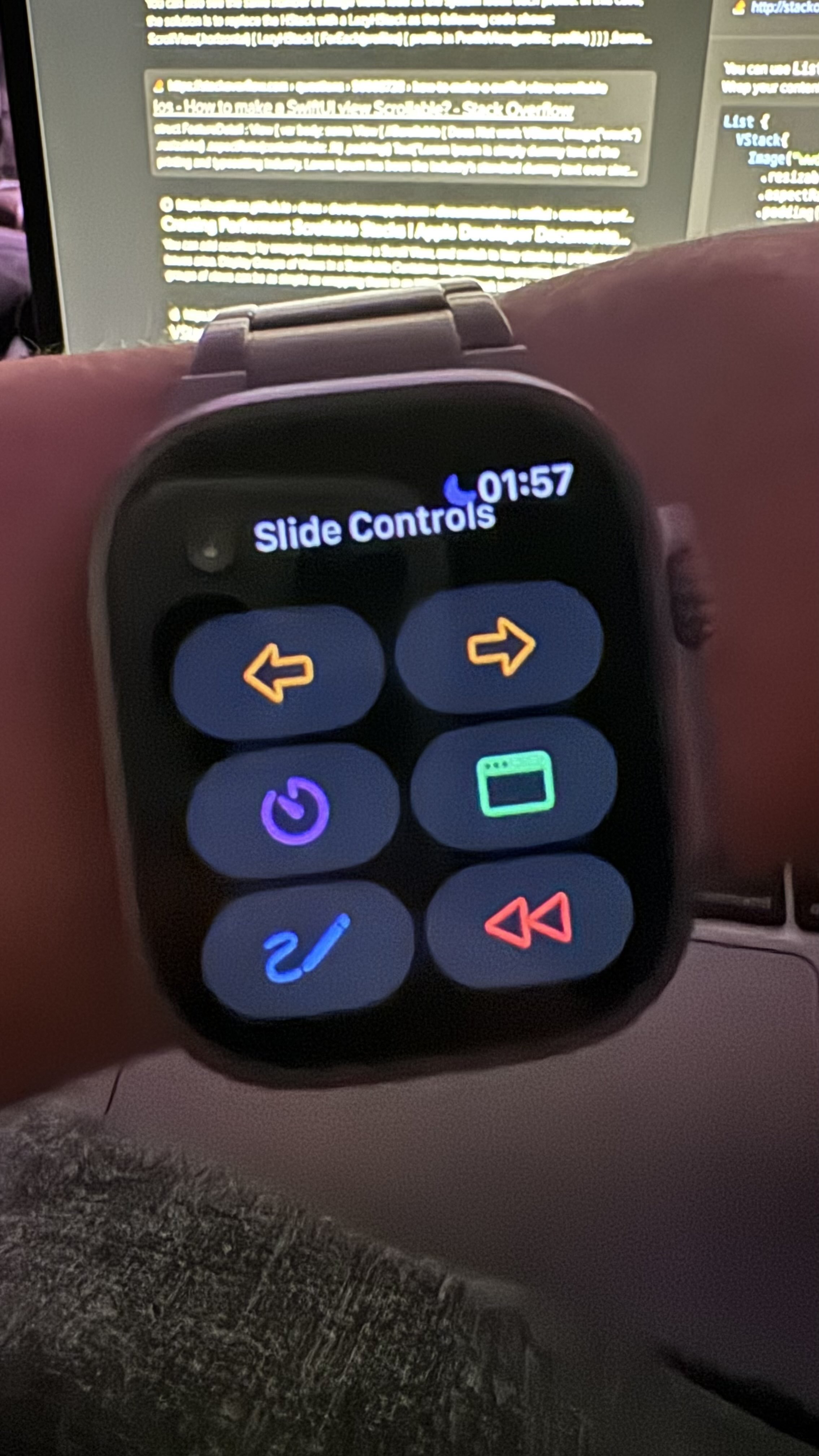

As a relatively long-term Mac user, and once (from about 2013 to 2021) an Apple Everything supporter, I am now trying to redirect myself the opposite way.
In short, Apple is beginning to suck.
Since replacing my MacBook Pro with a Windows machine I have found it very hard to move entirely from macOS to Windows. Bear in mind, when I first got a Mac back in 2009, I ran Windows on it as I wouldn't say I liked the software but loved the hardware. Fast forward to 2013 and my attitude shifted when I only used Mac OS X and didn't use Windows except for playing the odd game.
In 2022, I began to transition away from Macs, but it's not been easy. macOS is a lovely operating system, nicer than Windows by a country mile. But still, Apple's lack of repairability made my transition away easy, because the environment is more important than a Mac.
Their latest Mac Pro is an absolute disgrace - it's a large machine which hasn't changed in terms of design since Intel, despite the fact it should have. And I say that because the air cooling in the system is much more than necessary. This means that not only has Apple been lazy in terms of design, but it also means that the Mac Studio is actually a better buy for most people. The only difference is those PCI-E slots in the Pro, yet in theory several of those could be integrated using Thunderbolt anyway (though of course, not all).
Whilst I keep saying I'm transitioning from Macs, I still find it hard to not pick up my MacBook or use my Mac Mini so I'll be getting a Studio or Mini as my next Mac in the house (mid-next year though).
Apple makes many bold claims, not least about it's attitude to the environment. But it also forgets to mention how detrimental Apple is towards the environment when it comes to their laptops. As an owner of several Apple products from a Mac Mini to several MacBook Pros, iPhones, Apple Watches, iPads, Apple TVs and so on, you quickly realise the lack of repairability each of these has. They all have that one thing in common - lack of repairability.
This is, of course, good for Apple, whose core goal is to make as much profit as possible (even though they don't need half of what they have made). Apple will make a nice bit of extra cash when they have to repair devices for users because there is no easy method to do this.
But it's the planet that suffers. MacBooks cannot even have their batteries replaced by the consumer anymore - meaning that people like me who are experienced and able to do things like replacing drives etc, cannot do this anymore. Most people, including myself, chuck away the old device and get a completely new one because replacing the battery is around about £200 or something crazy.
All of this, is totally against the Right To Repair movement. Proposals for the Right To Repair have emerged in the European Union, which could force companies like Apple to start making their devices more repairable. As an iPhone 14 user who was actually trying to desperately hold on to his iPhone 12 until the iPhone 15 was released (mainly for the USB-C port that will be required by law), I find that Apple's defiance to law is disgraceful.
I personally will not be buying another MacBook Pro after this one, which is a real shame as I love the device so much, but the fact it lacks repairability (as well as ports) to try and make it as slim as possible is very anti-consumer. As a long time Mac user, I have finally had enough. I will miss macOS but I cannot justify the lack of repairability in Apple's products.
I was tempted by the new MacBook Air with its all-new design that ditches the wedge design that the Air has sported since its inception in 2008. The new design is actually, in my opinion, much nicer. But it's almost silly in its design since it now makes me wonder what the difference between an Air and a Pro is and narrows the gap between them.

Announced at WWDC 2022, Apple unveiled the M2 chip alongside the newly designed MacBook Air without the wedge design as well as 13 inch MacBook Pro amongst other devices in their product line. But the MacBook Pro 13" stood out as being the weirdest one.
Like many others, I was shocked by the fact that Apple kept the Touch Bar, they didn't bring MagSafe and there are no additional ports like HDMI being added. And here is where things get really messy. The base model MacBook Air is $1,199 and features an 8 core CPU, 8 core GPU and 8GB of memory (a lot of 8s there), but for just $100 more, you can upgrade to a 10 core GPU. This actually inlines the specifications of the Air to that of the 13" Pro.
So then it just raises one important question, who is the 13" Pro aimed at now? The only benefits of the Pro are the two hours more of battery life, the Touch Bar and the fans included with it. I would much rather have a lighter machine like the Air, and one without the Touch Bar and with MagSafe. It really makes no sense to me.
This was bound to be one of the most exciting Apple Events of all time since it would show how Apple's roadmap and progression of the last year have pushed what the Mac can do.
Last year's Apple Event was perhaps their most monumental in the history of the Mac - the shift away from Intel to their own architecture and system-on-a-chip design based on the ARM Architecture (known in the industry as AArch64).
Unleashed! These next six days are going to speed by. #AppleEvent pic.twitter.com/0ops2bVPvl
— Greg Joswiak (@gregjoz) October 12, 2021
But this week's event was expected to bring even more improvements including a rumoured Apple M1X processor. Instead, we saw something that was, for the most part, unexpected, two new variants of the M1 processor: the M1 Pro and the M1 Max (much like iPhone 13 Pro, iPhone 13 Pro Max). With these new processors, the MacBook Pro also saw two new models, a brand new 14-inch model and a refurbished 15-inch model. The base model M1 Pro has 8 CPU cores (2 of those are high-efficiency cores), whereas the top model M1 Max has 10 cores (again, two high-efficiency cores). In terms of graphics, the base model has 14 graphics cores whereas the top model M1 Max features 32 graphics cores.
Compared to previous models of the 15-inch model, the new versions no longer offer discrete graphics options but rely on Apple's new M1 Pro and M1 Max for the graphics, which, according to Apple, are very capable. Apple has made up for this graphics horsepower within the new M1 Pro and M1 Max and has gone absolutely all out with this! The M1 Pro has a whopping 200GB/s of bandwidth between the graphics cores and the memory and up to 32GB of memory available to it due to the unified memory architecture that Apple has integrated into this system. The M1 Max on the other hand is a whole new ballgame, offering up to 64GB of system memory that is shared with the graphics processing units of the processor, and an insane 400GB/s of bandwidth! That is approximately eight times more than the most powerful Intel Xe integrated graphics!
Apple also brough a new design to the MacBook Pro which I'm not sure I like quite as much as the old one but will have to wait until I see it in person. On the subject of the new design, there are finally more ports available on the sides of the MacBook, one of the main reasons I had considered getting one originally. As well as your standard Thunderbolt 3/USB 4 ports, which there are now three of, you also get a full-size HDMI port, a headphone jack (as before), an SD card reader, and, to me the best feature, the new MagSafe 3 connector which acts as a dedicated power port. You can continue to use Thunderbolt to charge your MacBook of course.
Overall, I am very impressed with Apple and how they have developed the Mac so rapidly over the course of the last year.
As many of you know, I'm an Apple fan that has simply spawned from my love of my Mac and as deeper integration between devices became a big thing, I began to move entirely to Apple starting with iPads, then iPhones (I've had iPhones for years but I've always tried switching from time to time and then realising that it's better to stick), Apple Watch in 2019 (after my very anti-wearable technology stance that I had stopped when I bought my second Apple Watch) and AirPods last year.
The spring event was very exciting and once again, Apple didn't disappoint. However, it wasn't all good. As someone who owns an iPad Pro I was slightly disappointed to see the M1 powered iPad but at the same time realise that it's not targetted at me anyway (but I do like to have all the gizmos and gadgets and Thunderbolt would have been amazing for me).
However, I will say that it's blurring Apple's own vision of a distinction between tablet and laptop/desktop computers. Apple has always said that they would never merge iPad and Mac devices and would never unify the operating systems and whilst they haven't done this yet, and they may never do, there is one particular area where Apple's latest iPad breaks everything and that's the MacBook Air.
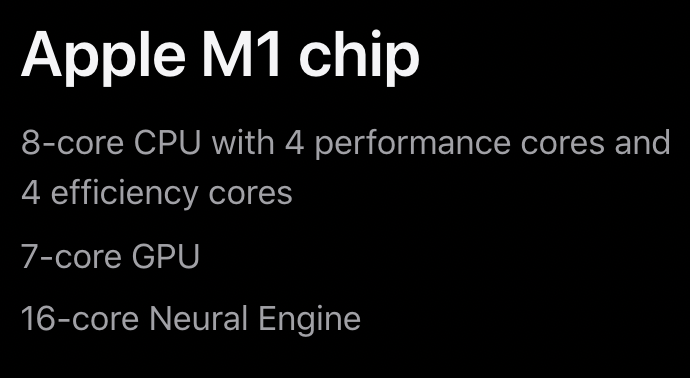
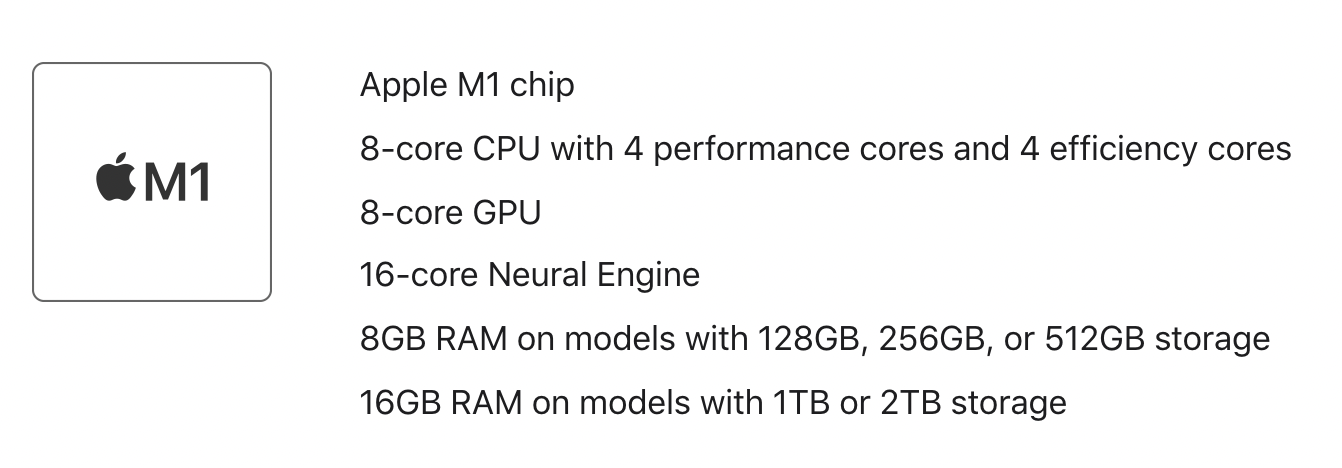
On the left are the specifications for the base model MacBook Air and the specifications for the iPad Pro. You will likely notice that the iPad has better graphics specifications than the Air does at the base model. This then makes me wonder, what's the purpose of the Air?
As I pointed out in my review of the MacBook Pro M1, the fans are almost impossible to ramp up to any speed at all, even when I'm working outside in the sun. I also pointed out that the MacBook Air has no fans in it at all whereas the Pro does, and for the majority of people (including me) the MacBook Air would be a more suitable computer system because other than that the systems are practically the same.
But now that iPad Pro has the M1 with better performance than the Air which then suggests that those who are looking for an entry-level system in the Apple M1 ecosystem could look straight to the iPad Pro rather than the Air and those who will need that extra performance brought on by the MacBook Pro's thermal capabilities, would only need to think about getting a Pro, not an Air. That then leaves the Air in a place that doesn't really exist other than for those wanting to get a decent yet cheap Mac running on macOS.
AirTags
AirTags look good, as you would expect, and what astonished me the most was that the batteries are replaceable which isn't available on all models of Apple's biggest competitor - Tile. This is surprising since Apple seems to be going the opposite way (along with the rest of the industry) and removing user-serviceable components.
I've actually ordered an AirTag for my Rad Power Rad Runner bike (aptly named the Rad Revolution).
The biggest criticism for me is that the tag has no option for sticking it to something. Another thing is the lack of choice with them since there's not even one with a carabiner attached to it, and even if Apple did decide to release something like this, based on the price of some of the accessories for them (or cases) I would expect them to be priced ridiculously anyway.
Since it's Apple nothing is cheap, but in comparison to Tile's offerings, they are priced at a similar level which is surprising.
Apple TV 4K
It's good that Apple didn't give up on TV a few years ago when it was next to nothing since they have only just made it worthwhile by bringing it to several existing TVs, Macs, iPads and now to other TVs with the Apple TV 4K. The ATV4K is a welcome update to the older model which hasn't been updated for quite some time.
iMac
I saved the best to last since I think the new iMacs are exactly what needed to be done with the iMac, apart from a few minor things.
The much slimmer design and smaller bezels have worked very well in this design and fit with the design of the iPad Pro with the curved edge (which I really liked on the iPad Pro).
But. And this is one of those things where I cannot understand what happened at Apple when they designed this. I can understand it with the Mac Mini, but why does it have the same processor as the iPad Pro, MacBook Air, MacBook Pro and Mac Mini? Why didn't it get something like an Apple M1X or M2?
Another criticism of the new iMac is once again down to the fact that like everything Apple works to achieve, they aim to garner awe in their products by announcing stuff such as "the world's most advanced operating system ever" or "the most powerful phone on the market". In the case of the iMac, they wanted to shrink the whole computer down so much and by making it thinner had to reduce the size and placement of the motherboard. Thumbs up on this one to Apple for making the board smaller, but thumbs down as a result of moving the board down to make the system slimmer and smaller, they have added back the 'chin' design of the iMac. And the worst bit of all, where's the Apple logo gone from the front of the iMac?
I will say though, I think I will, or, at least, my mother will end up buying one of these (my mother still has an iMac from early 2009 and it still runs fine but it's a bit chunky).
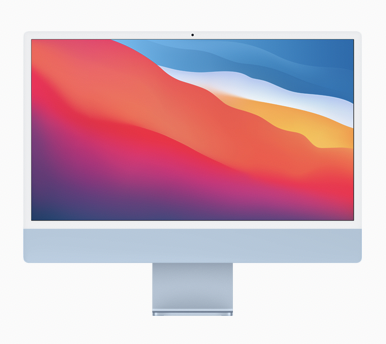
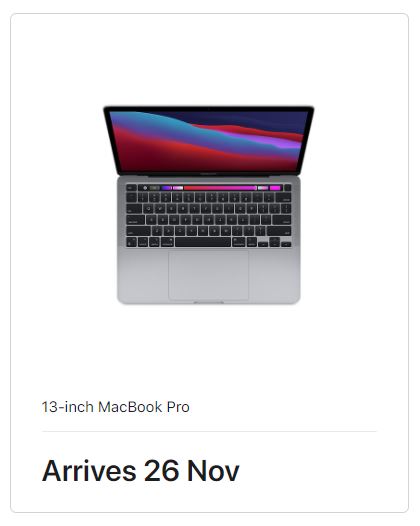
It is at long last that Apple has announced its own silicon will be used in the next range of Macs. The Apple M1 was announced today as Apple's first in the line of successor CPUs to the Intel range they've used since 2006 (I still remember the day back then and I wrote a little article in Microsoft Word so I could remember the day).
As a result, I of course had to be one of the first owners of these new machines so I ordered it straight away. This new MacBook I've ordered comes in the form of a MacBook Pro (though I was very tempted by the Mini as well) to replace my 2013 MacBook Pro 15". I wanted a 13" again this time since I wanted the portability again.
I am really looking forward to reviewing this machine and hope that it is everything I had hoped for!
Although I would never spend the amount of money required to get a Mac Pro since my MacBook Pro is my work machine, it's always both exciting and inspiring to see how the Mac Pro changes and to follow it's paths.
Mac Pro has had it's latest update this June and the new update was very welcome. Gone is the dustbin-design of 2013 and in is the more classic and traditional looking Mac Pro with a new twist.
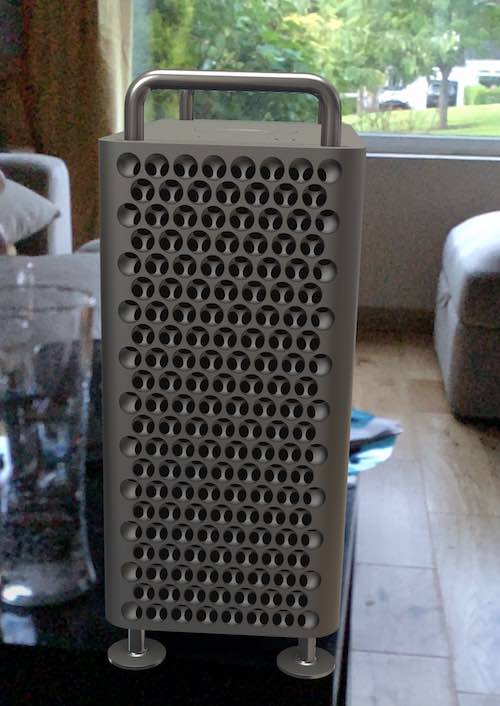
I thought I'd take a look at this thing in my living room
This thing, on paper at least, is a monster in terms of both performance and upgradability. It's actually on a new level for upgradability too. Featuring 8 PCI-E slots, all x16 in length of which a maximum 3 are actually full x16 slots capable of 16 lanes of PCI-E 3.0. Although Apple could probably have held out a little longer for PCI-E 4.0 this is still a beast.
Design wise, I'm really happy to see Apple move back to a more traditional looking machine.


